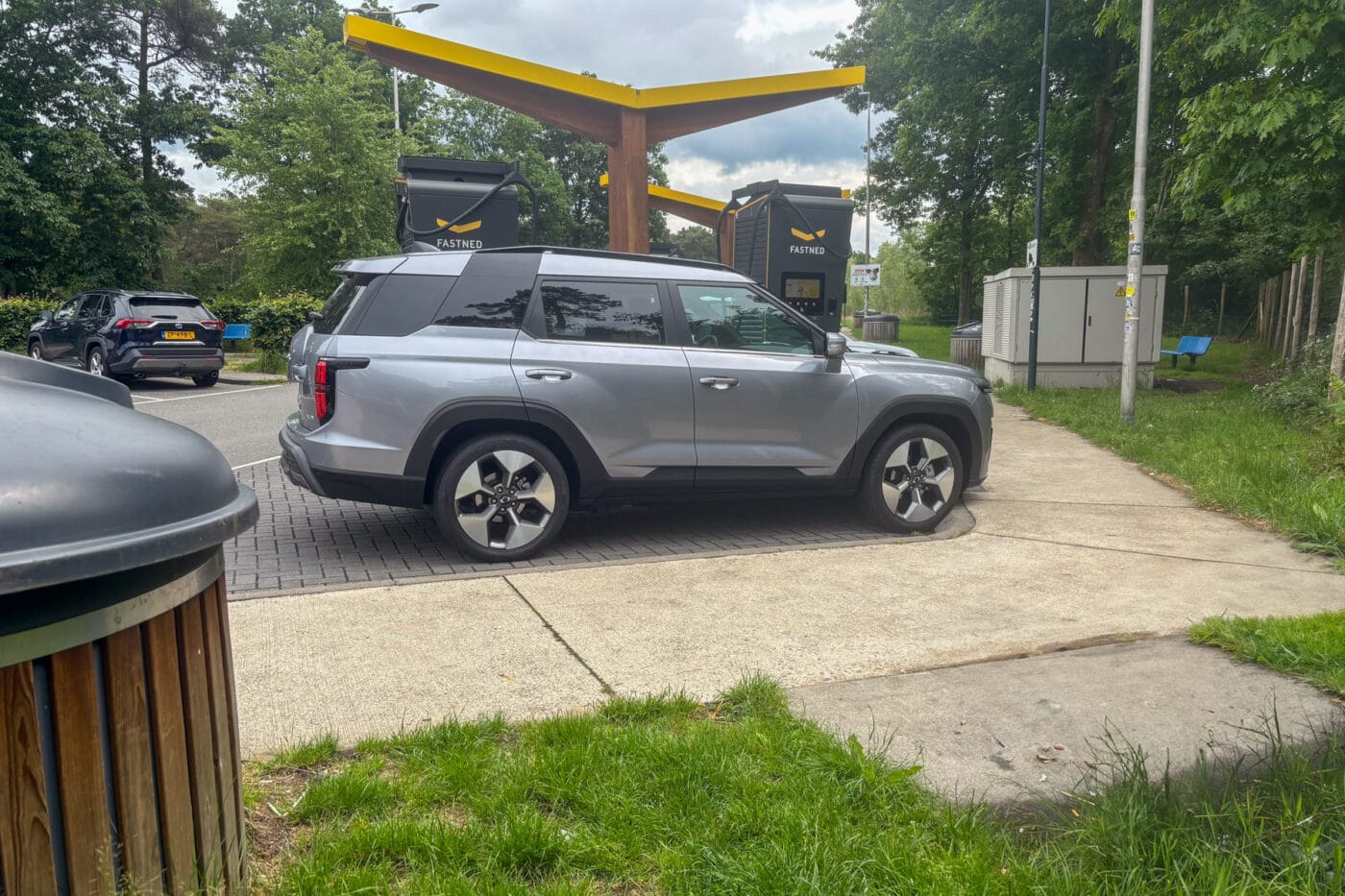
KGM Torres EVX test proves exotic with light and shade
An angular off-road vehicle design and six LED light elements instead of the radiator grille at the front: this car could almost pass for a Jeep, but for the US manufacturer, it would traditionally have seven elements – that’s how many openings the typical Jeep radiator grille has. So the Torres EVX has revealed that it is a KGM after all. If the abbreviation doesn’t ring a bell: KG Mobility is the successor to Ssangyong, as the South Korean car manufacturer was taken over by bus manufacturer KG Mobility in 2023. It now also sells cars under its own brand, including electric ones.
KGM also offers the Torres as a combustion engine, under the same name but with a different, more classic front design. The Torres EVX is designed to stand out. And yet carry on the off-road vehicle heritage of the Ssangyong brand. To this end, the designers have added handles to the top of the bonnet, for example, but these are purely design elements, as the parts cannot be used as handles. The boot lid has two special features: Firstly, it has a visually implied spare wheel holder, which is not uncommon on genuine off-road vehicles; however, it remains a large bulge, and there is no spare wheel. The opening handle is not in the centre, but further to the right, as the rear doors used to open sideways. On the Torres EVX, however, the tailgate swings open upwards as normal.
Concerning the battery, KGM does not rely on its own developments, but enlisted the support of BYD, which supplies its blade battery with LFP cells and cell-to-pack technology. In the Torres EVX, the battery has an energy content of 73.4 kWh, which should enable a range of 462 kilometres according to WLTP. Propulsion is provided by a 152 kW permanent magnet synchronous motor on the front axle, which offers 339 Nm of torque and should accelerate the car from a standstill to 100 kph in 8.1 seconds, while the maximum speed limit is 175 kph. Values that don’t stand out in the competitive mid-range electric SUV class, but that doesn’t have to be a bad thing, as long as the car is solidly built.
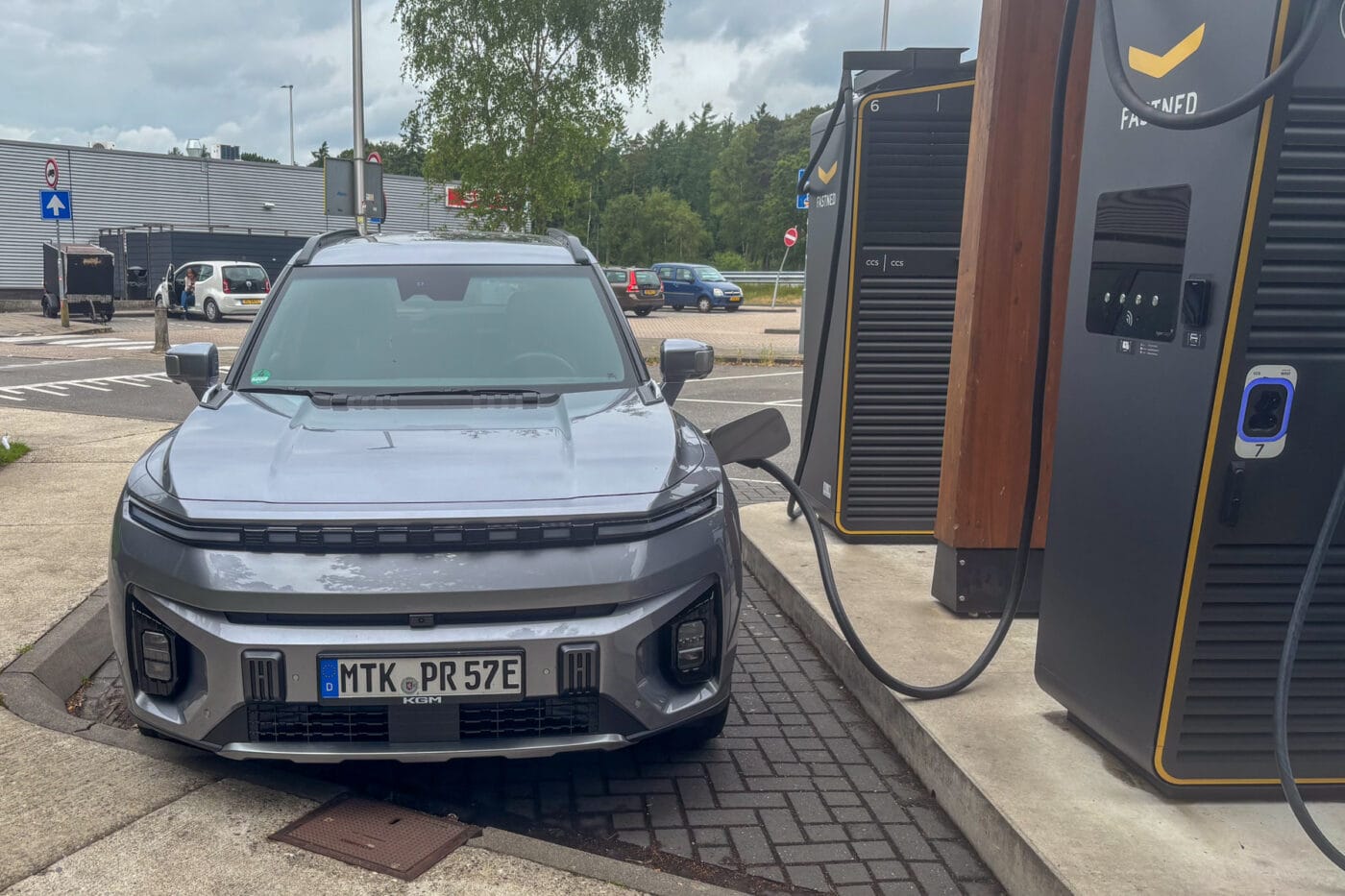
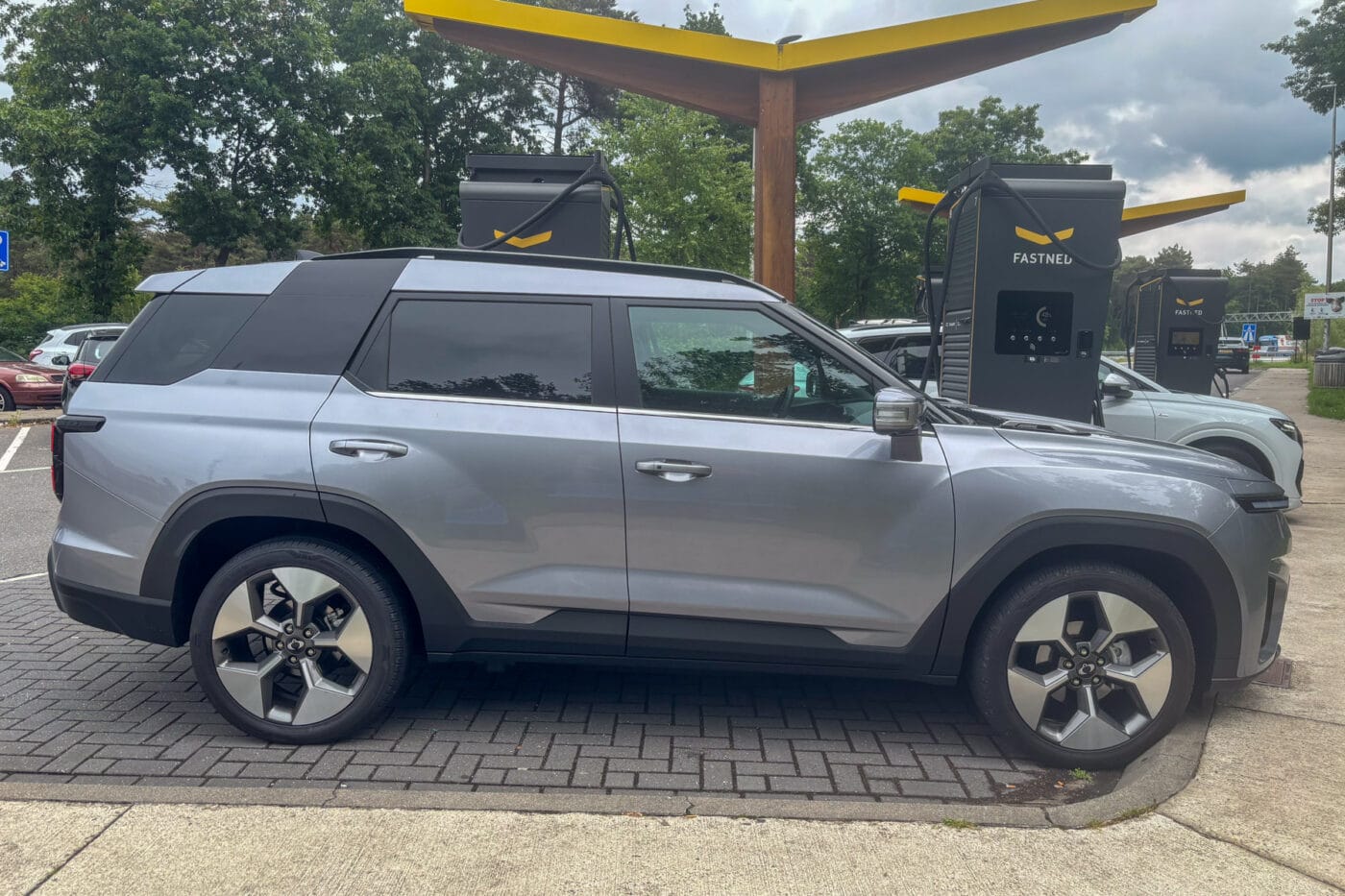
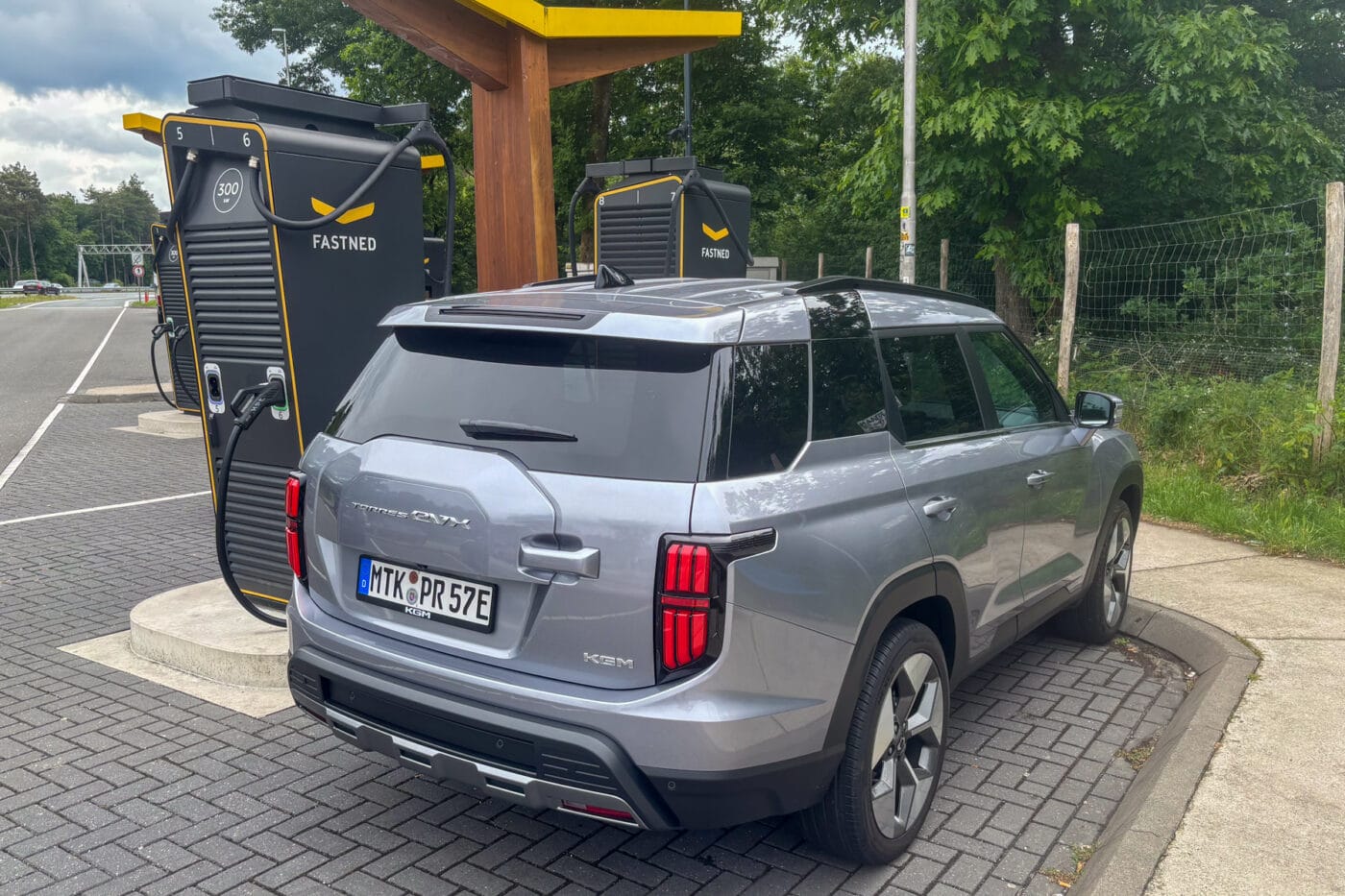
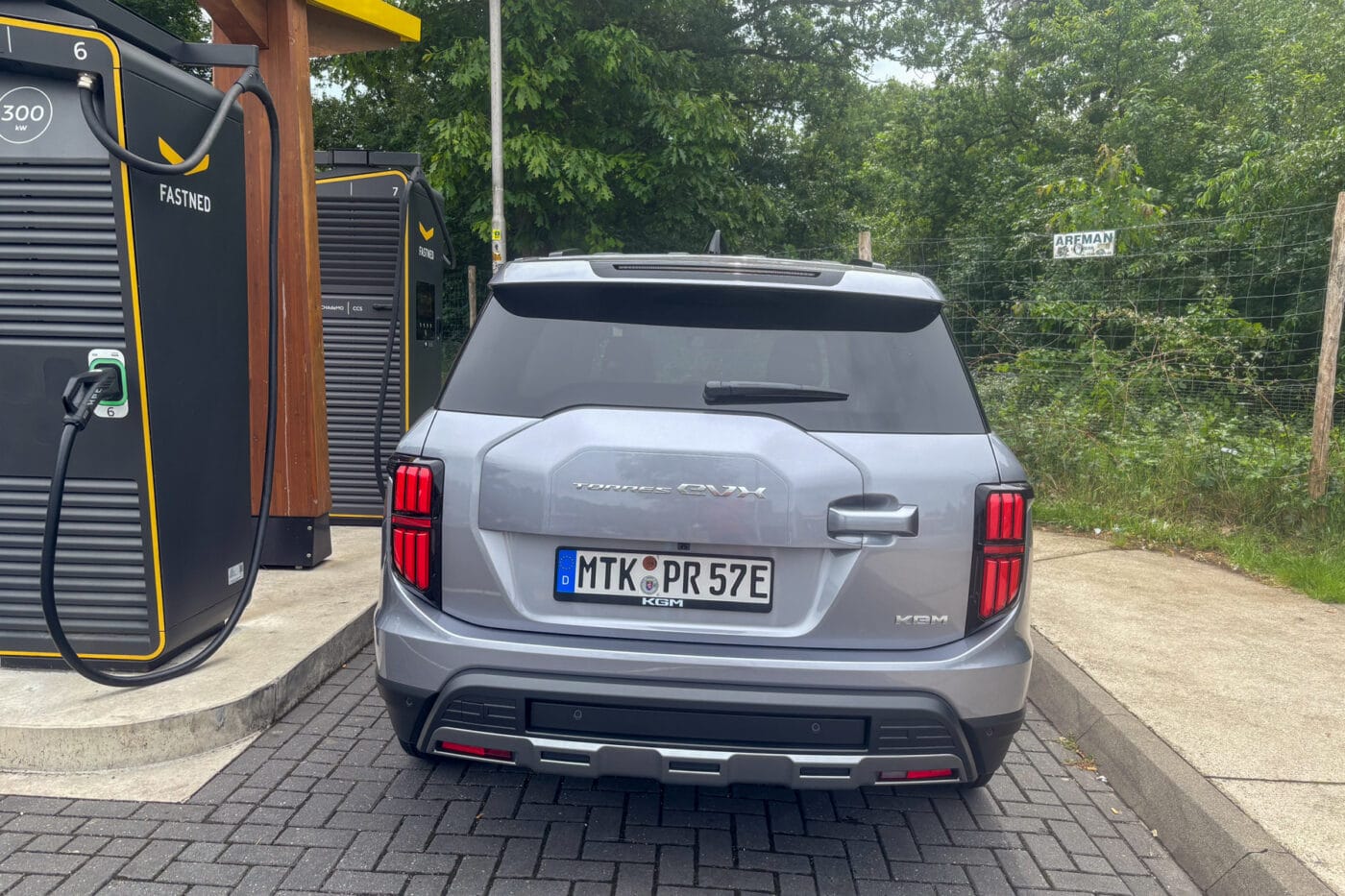
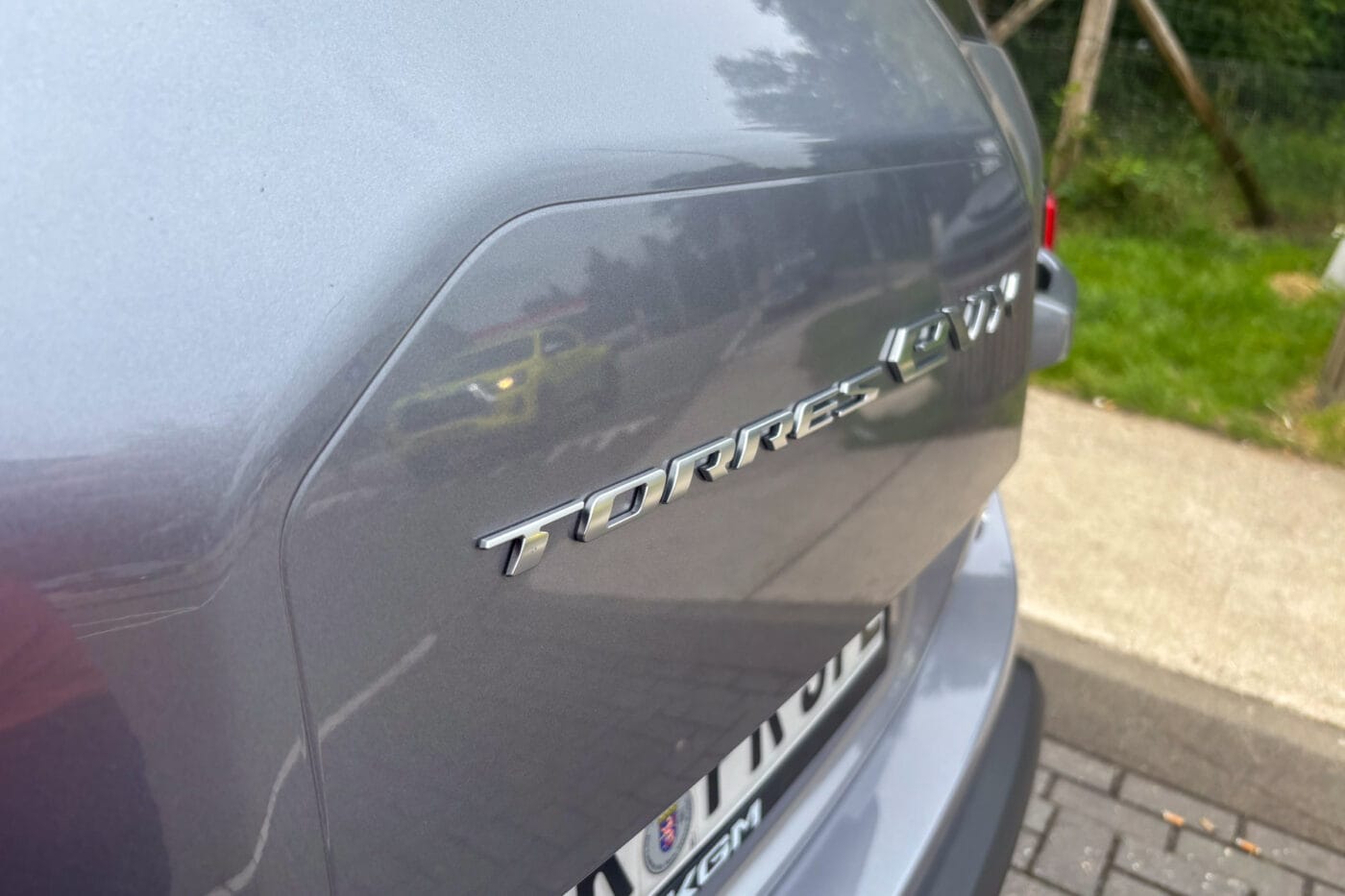
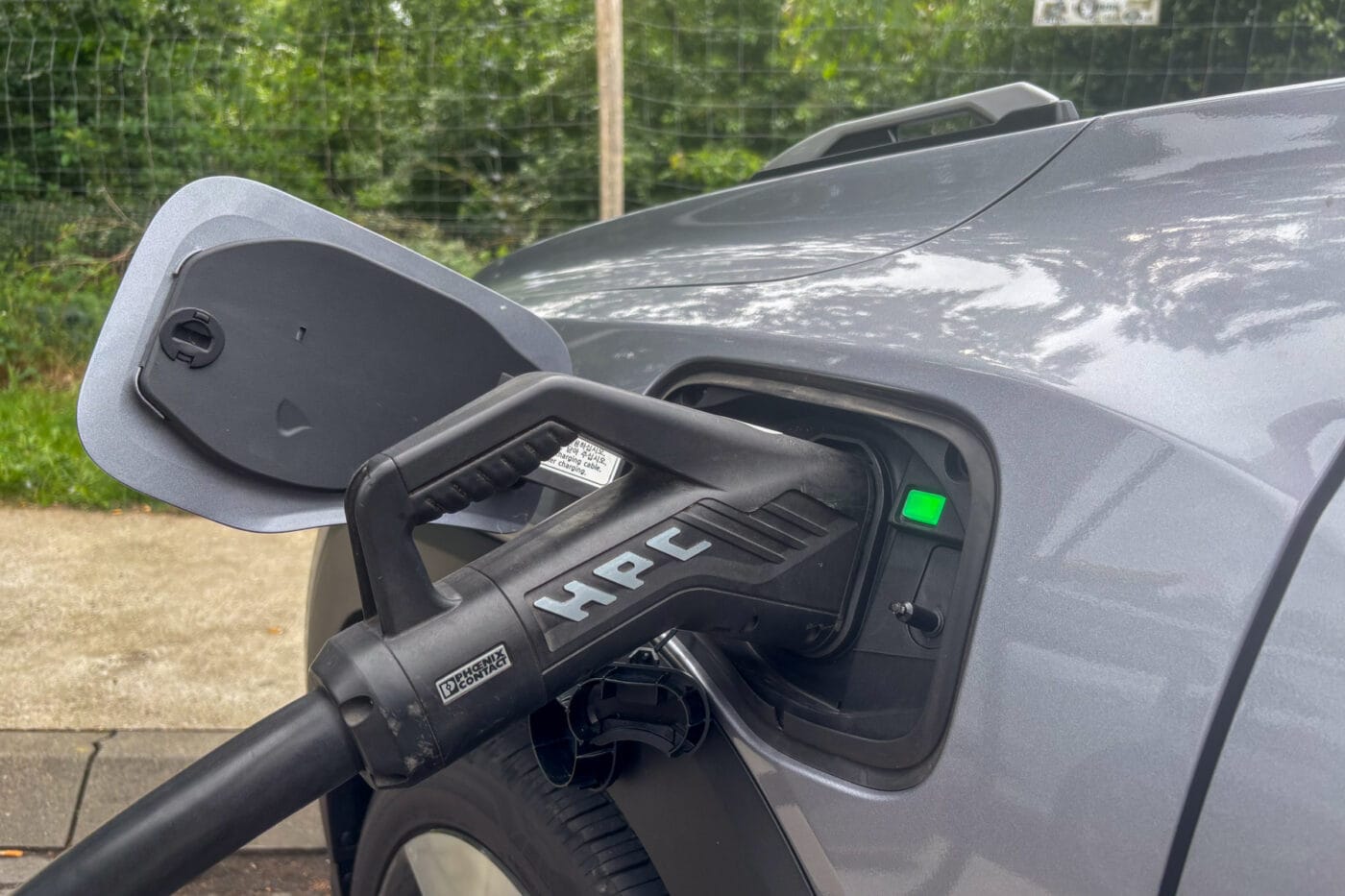
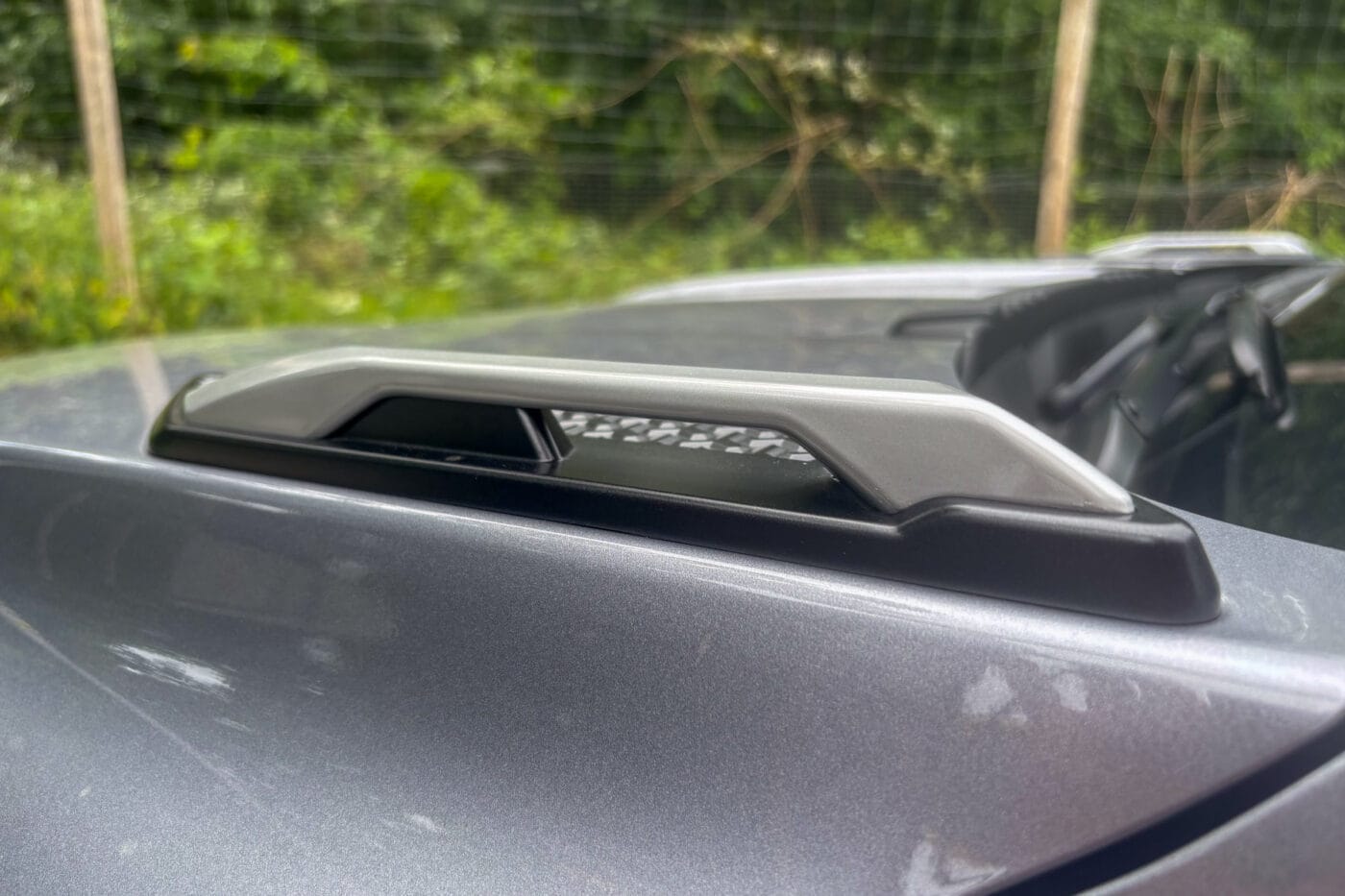
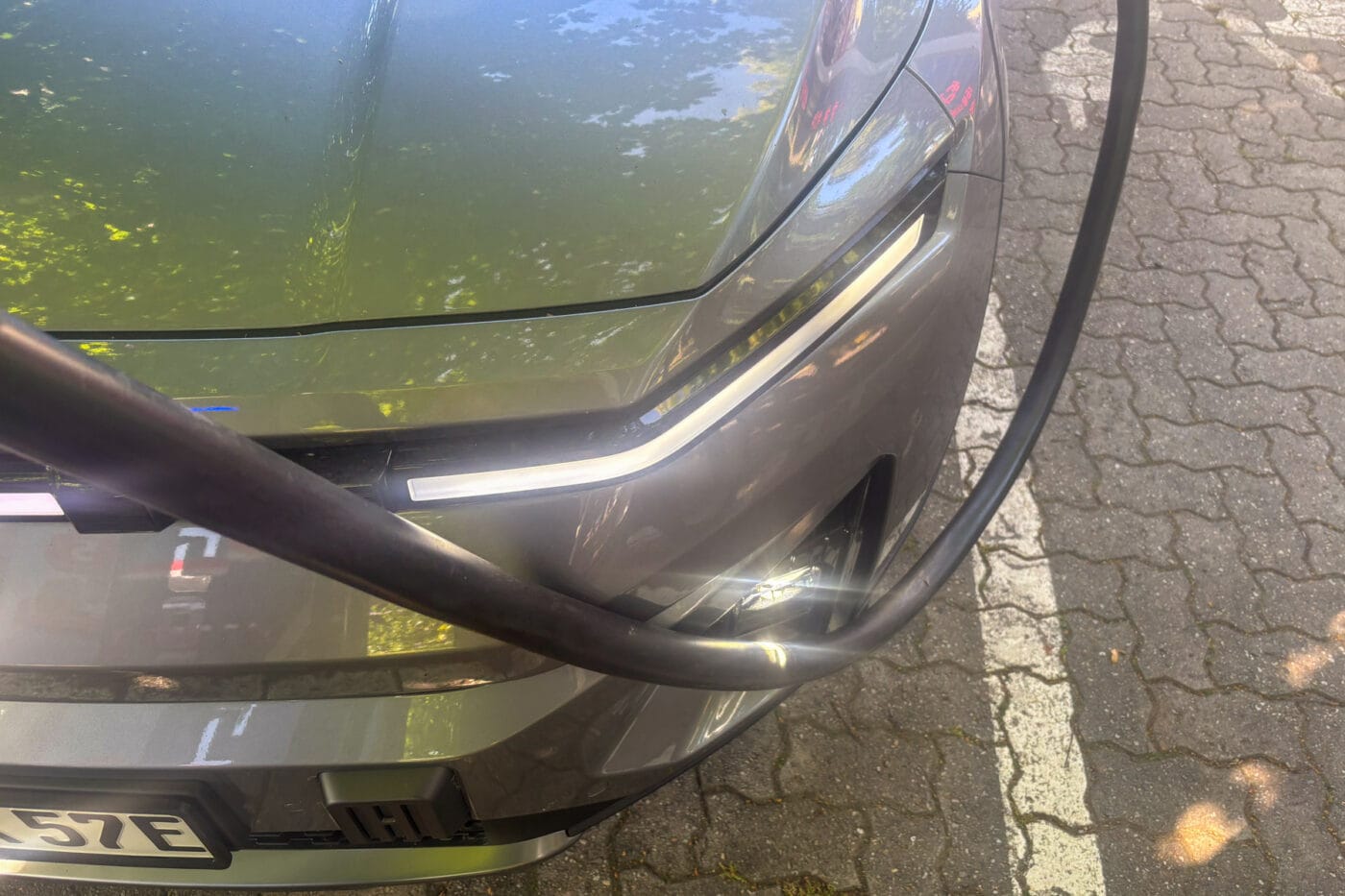
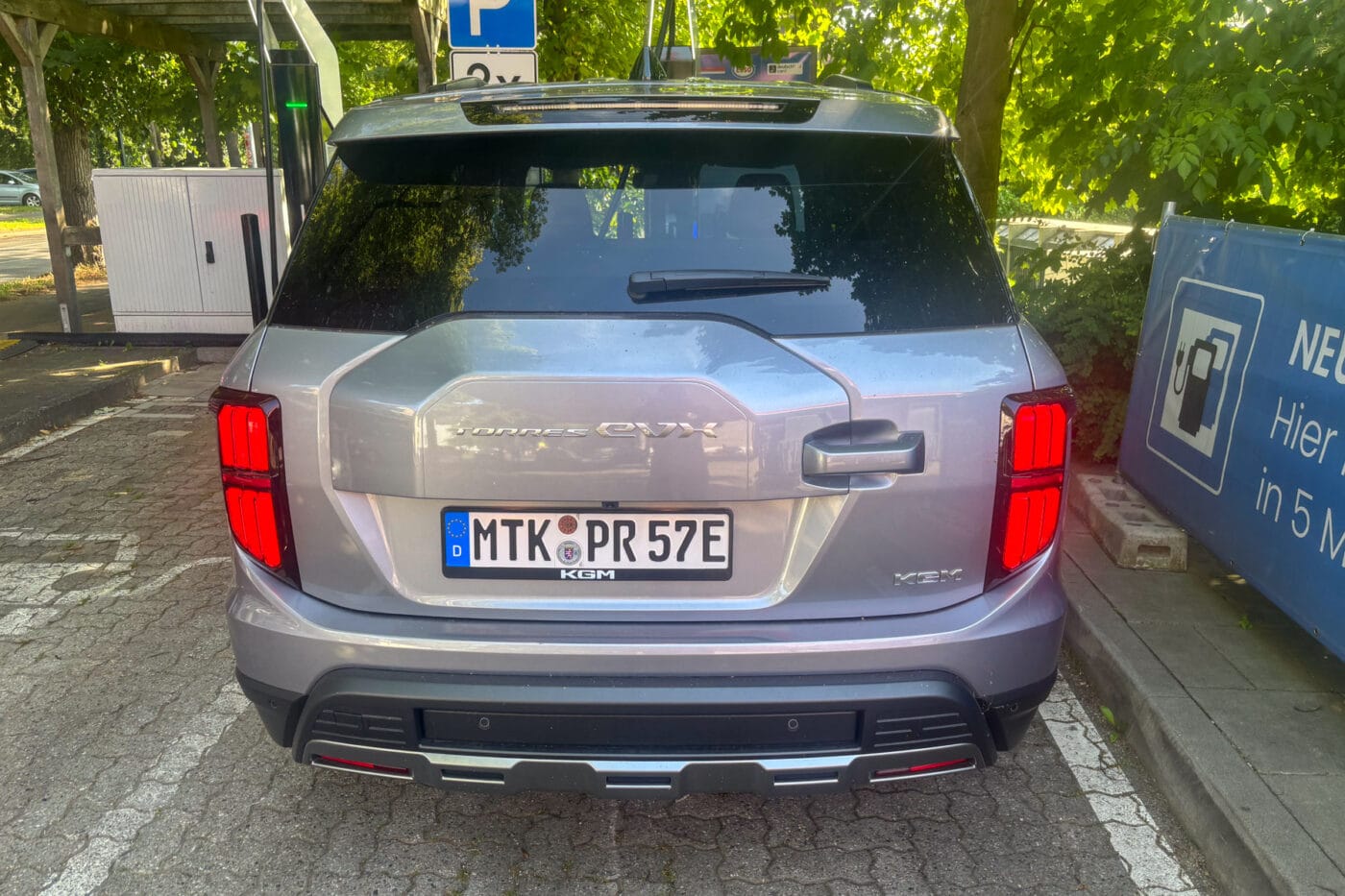
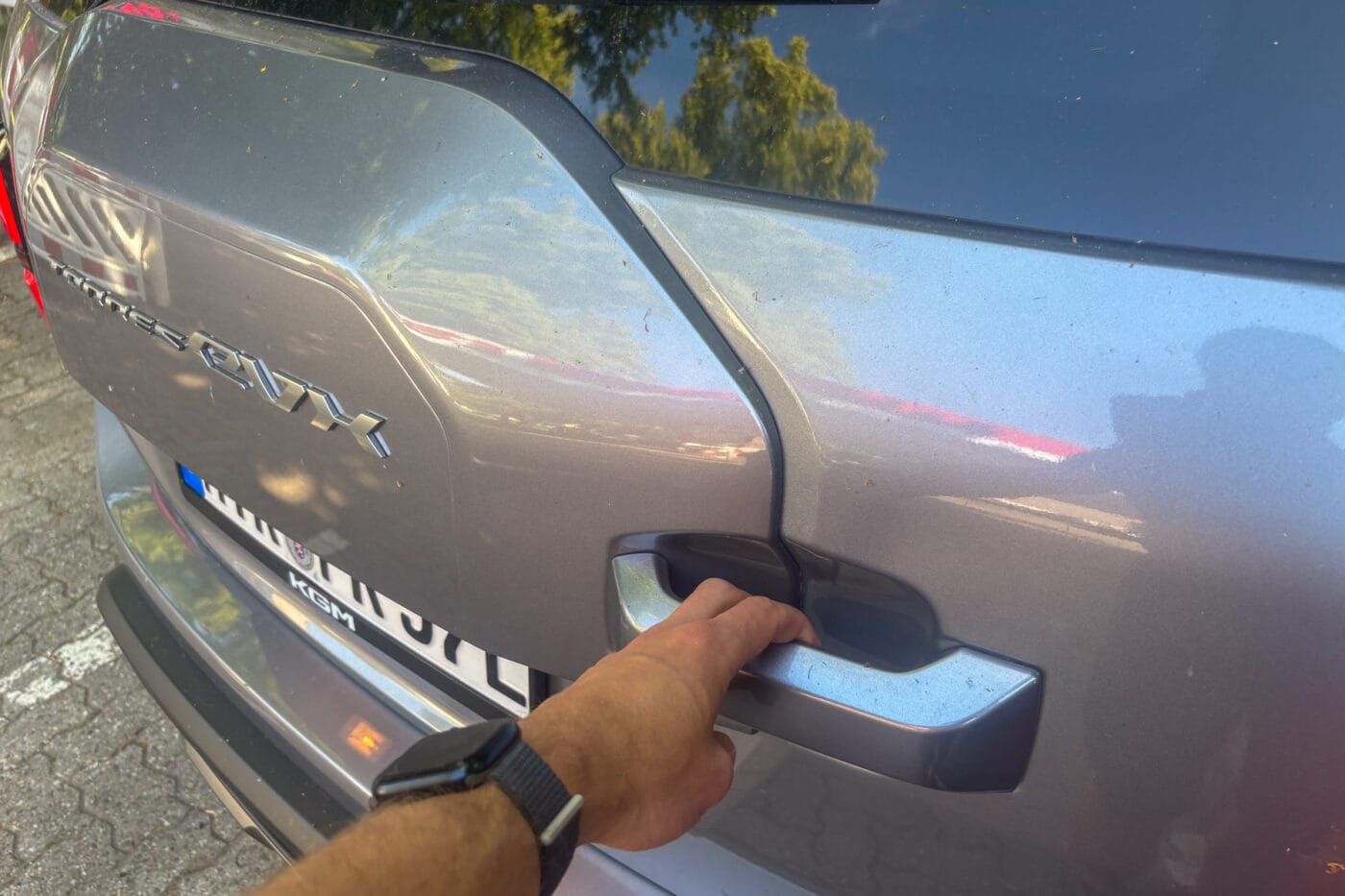
From the very first few metres, the first impression from the outside continues into the interior. The Torres EVX looks solid and practical, there is plenty of space in the front and rear, and a very decent boot for a car around 4.70 metres long. 839 litres in the normal five-seater configuration is impressive, with the rear seat backrests folded down, it can hold up to 1,662 litres. The seats are simple, but initially comfortable enough, and the cockpit landscape with two large displays is not an exception in current cars, but rather the rule. The fact that, for a rather small manufacturer, not every translation into German fits in the displays and sometimes funny designations are assigned is nothing new in electric mobility – it has happened before.
The copper colour is a striking design element in the interior – for example, in the decorative stitching on the seats, steering wheel and door panels, but also in the form of large plastic parts in the dashboard and centre console. In my opinion, this looks a little deliberate and artificial, not quite coherent – some of the plastic parts still have striking line patterns, some do not. What is very pleasant, however, is that KGM has almost completely dispensed with the high-gloss black plastic that was very common for a long time! The catch: the control panels on the steering wheel (more on this later), of all things, which are constantly touched, are still made of the fingerprint-attracting material.
Chassis makes a mixed impression
Light and shade run like a red thread through the test: time and again, the Torres EVX does things well or at least at a fully acceptable level, but then there is another point that spoils the experience in the KGM. In typical electric car fashion, the Torres EVX drives pleasantly quietly (provided you deactivate the two virtual motor sounds in the menu), which, together with the rather soft suspension, initially leaves a comfortable impression. It is true that the Torres EVX leans in bends and also pitches forward a lot when braking. But the car is not comfortable through and through: small bumps and humps are still passed on quite directly to the interior. And after several hundred kilometres, the seats do not prove to be as comfortable as expected. There is a lack of padding and lateral support, and the longer the journey goes on, the more you actively slide back and forth in search of a more comfortable position.
The drive system does its job well without setting new standards. A VW ID.4 with the 210 kW APP550 on the rear axle or a Model Y with rear-wheel drive are quicker, but the KGM didn’t feel underpowered; other electric SUVs also rely on front-wheel drive. Fuel consumption is, unsurprisingly, given the angular body with a steep front, heavily dependent on the driving profile. On short journeys through the city or on country roads, the onboard computer regularly displayed less than 15 kWh/100 km. On the motorway at a cruising speed of 100 kph, it was around 20 kWh/100 km, and at 120 kph, around 22 kWh/100 km. In the worst case, this results in a motorway range of around 330 kilometres, while in the city, the WLTP range of 462 kilometres is even possible. This statement applies to summer, mind you; we drove the car in temperatures of around 20 to 25 degrees. In winter, especially with LFP batteries, it can look quite different, but we were unable to test this.
One positive aspect of charging is that the Torres EVX has undercut the factory specification by a considerable margin. The maximum DC charging capacity is 120 kW. How long the charging process takes is something that even KGM cannot quite agree on: although 42 minutes is specified, this is sometimes from ten and sometimes from 20 to 80 per cent. That would actually be anything but positive; charging times of over 35-40 minutes are simply no longer competitive in this competitive environment in 2025. It was thus all the more surprising that during our test charging process, starting with a charge level of 12 per cent, 80 per cent was reached after just 32 minutes! And since the charging process started directly at 85 kW, it is highly unlikely that the additional two per cent charge level would have taken ten minutes.
However, in winter, the 42 minutes could be much more realistic, if they can be achieved at all. This is because the Torres EVX does not have a battery preconditioning system that brings the cells into the optimum temperature range for LFP batteries. There is no such option in any of the complex menus. Nor is automatic preconditioning possible via the sat nav for scheduled charging stops, because the permanently installed sat nav simply does not recognise charging stations. It is 1:1 TomTom software for combustion cars. It is possible to find and navigate to petrol stations as points of interest, but not charging points, and certainly not automatically.
However, apart from the lack of an option to heat or cool the battery at the touch of a button, the poor sat nav itself is not a major point of criticism: experience shows that most customers (even in premium cars) prefer to bring the sat nav with them in the form of their smartphone anyway. The connection via Apple CarPlay also worked without any problems in our test – operation was smooth and without any interruptions. There is even a small compartment in the centre console where you can place your smartphone in a good grip position. There is a small opening at the bottom of the compartment through which the charging and data cable can be pulled – a great feature. But you guessed it: where there is light , there is also shadow. That is because the back of the smartphone tray is extremely slippery; even when cornering slowly, the smartphone constantly tilts from right to left and back again. A small anti-slip surface would do the tray a lot of good. Alternatively, there is also an inductive charging cradle for the smartphone (not in the basic version), which is non-slip, but unfortunately, it was not possible to connect to Apple CarPlay.
There is also potential for optimisation with the assistants. The often criticised speed assistant, which issues a warning when the speed limit is exceeded, reacts quite early. However, the warning tone sounds more like a fatal error message. However, the system can be quickly deactivated via the touchscreen. Curious: even if you have switched off the assistant, which warns you even if the speed limit is exceeded by a small amount, a second system will sound a different, very discreet warning tone if the speed limit is exceeded by a larger amount (for example, if a speed limit of 80 kph has been recognised but there has not been an 80 kph sign for a long time). Logically, it would be the other way round: a discreet beep if you are travelling 3 kph too fast and an urgent warning if you are (supposedly) really going too fast.
Operation not quite optimal
On the other hand, the controls themselves are easy to learn. The combination of touchscreen and the many steering wheel buttons seems a little confusing at first, but once you have memorised your menu items and assigned the buttons precisely, the system is quite simple. All the important charging functions can also be set in the menu, such as a charging start time (for overnight charging at the wallbox) or separate target charging levels at AC and DC charging points. In other words, everything that most electric cars also offer. However, the fact that the climate functions are also only controlled via the touchscreen was a little awkward: the field for this pops up on the right-hand edge of the passenger’s screen and is far away from the driver. It would be better to have a bar at the bottom of the screen that is easily accessible for everyone.
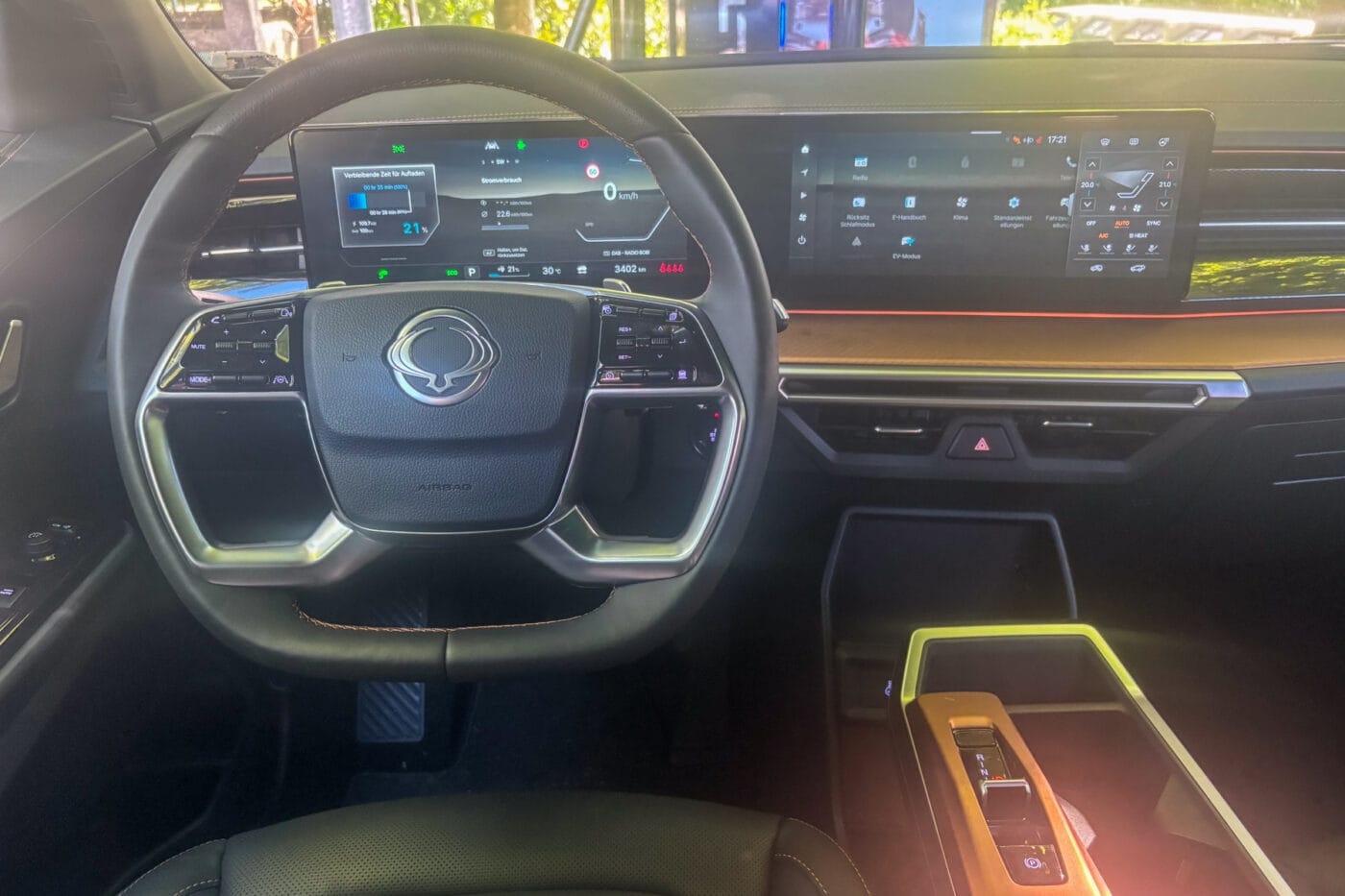
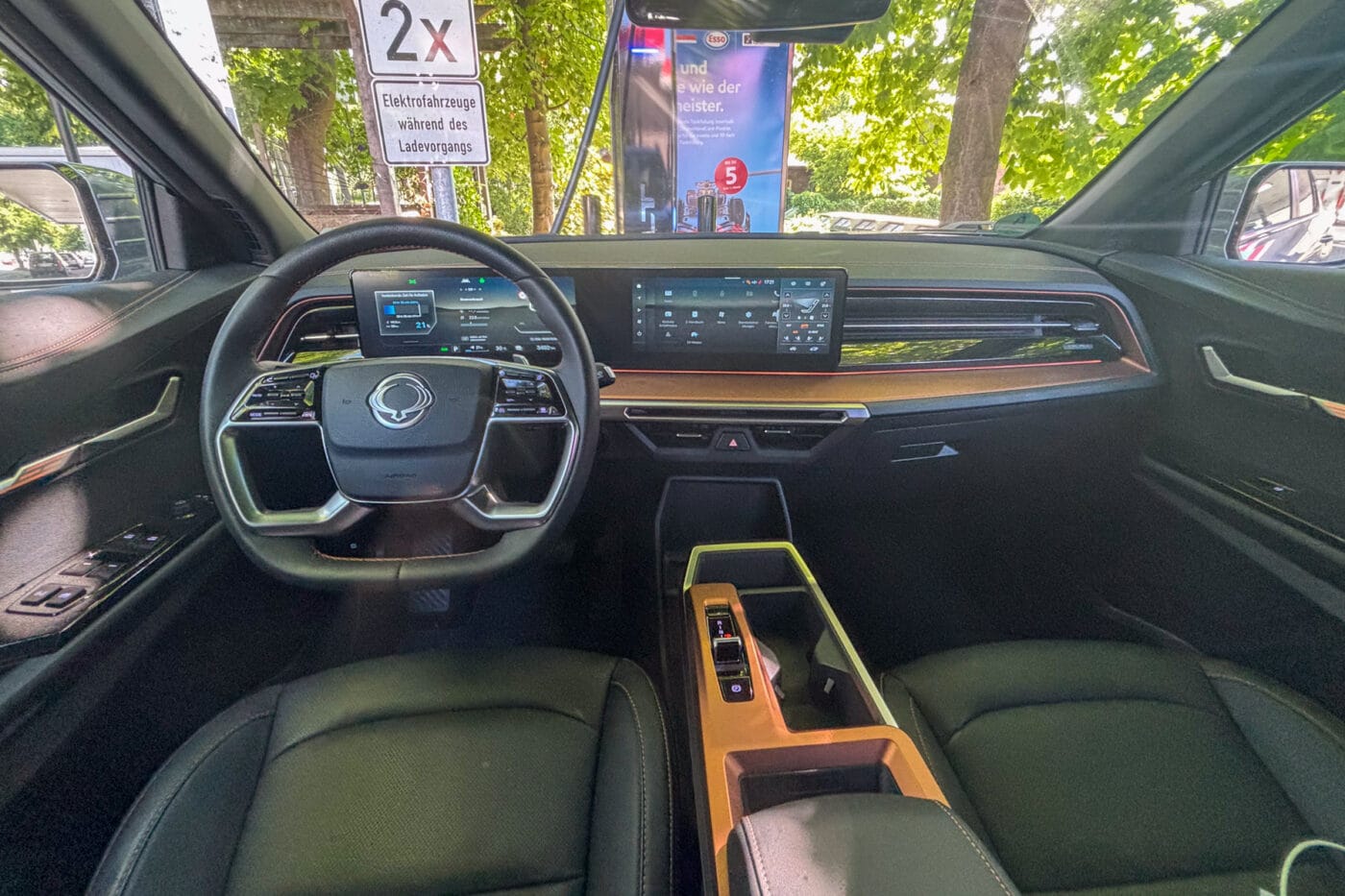
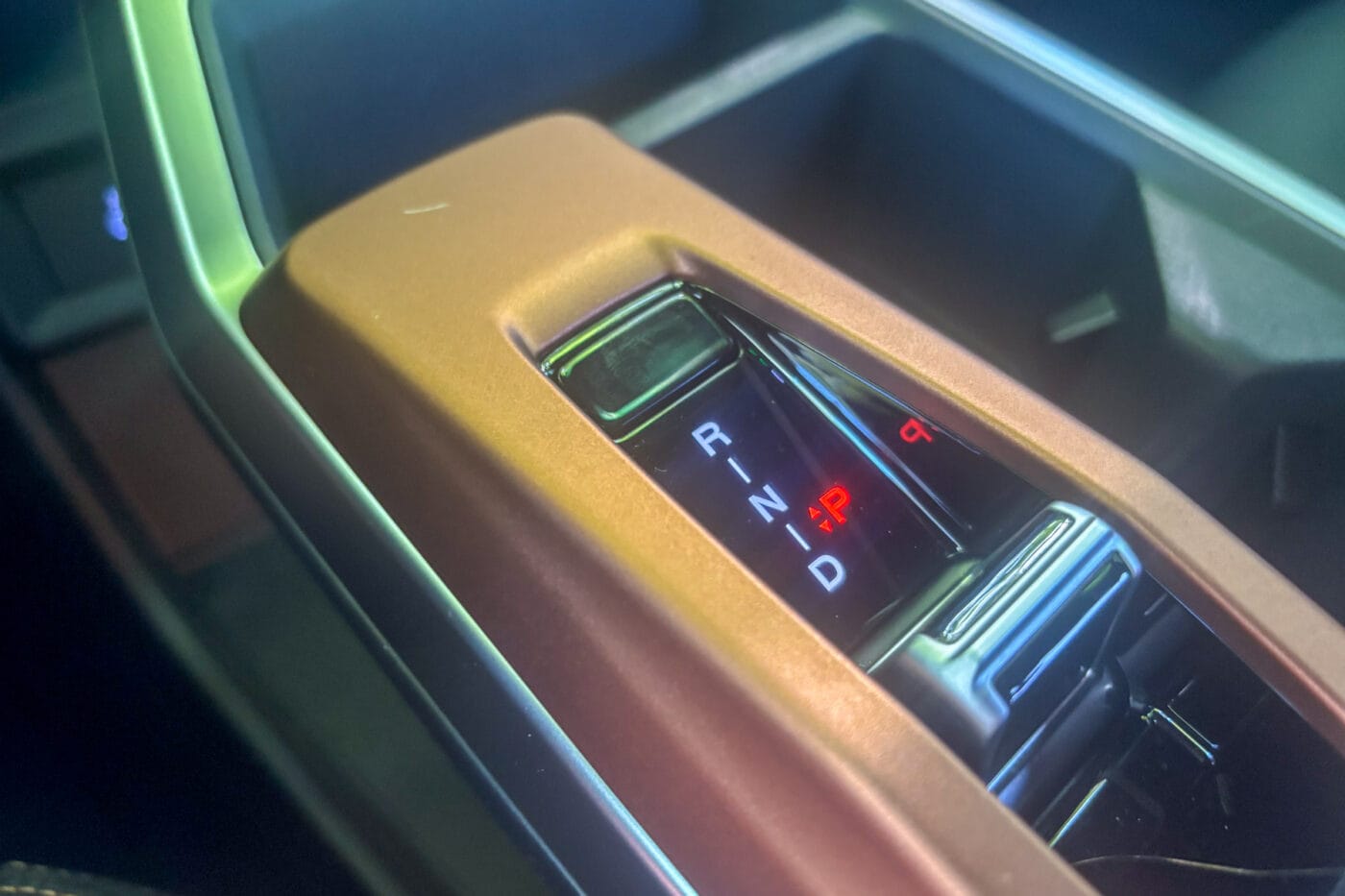
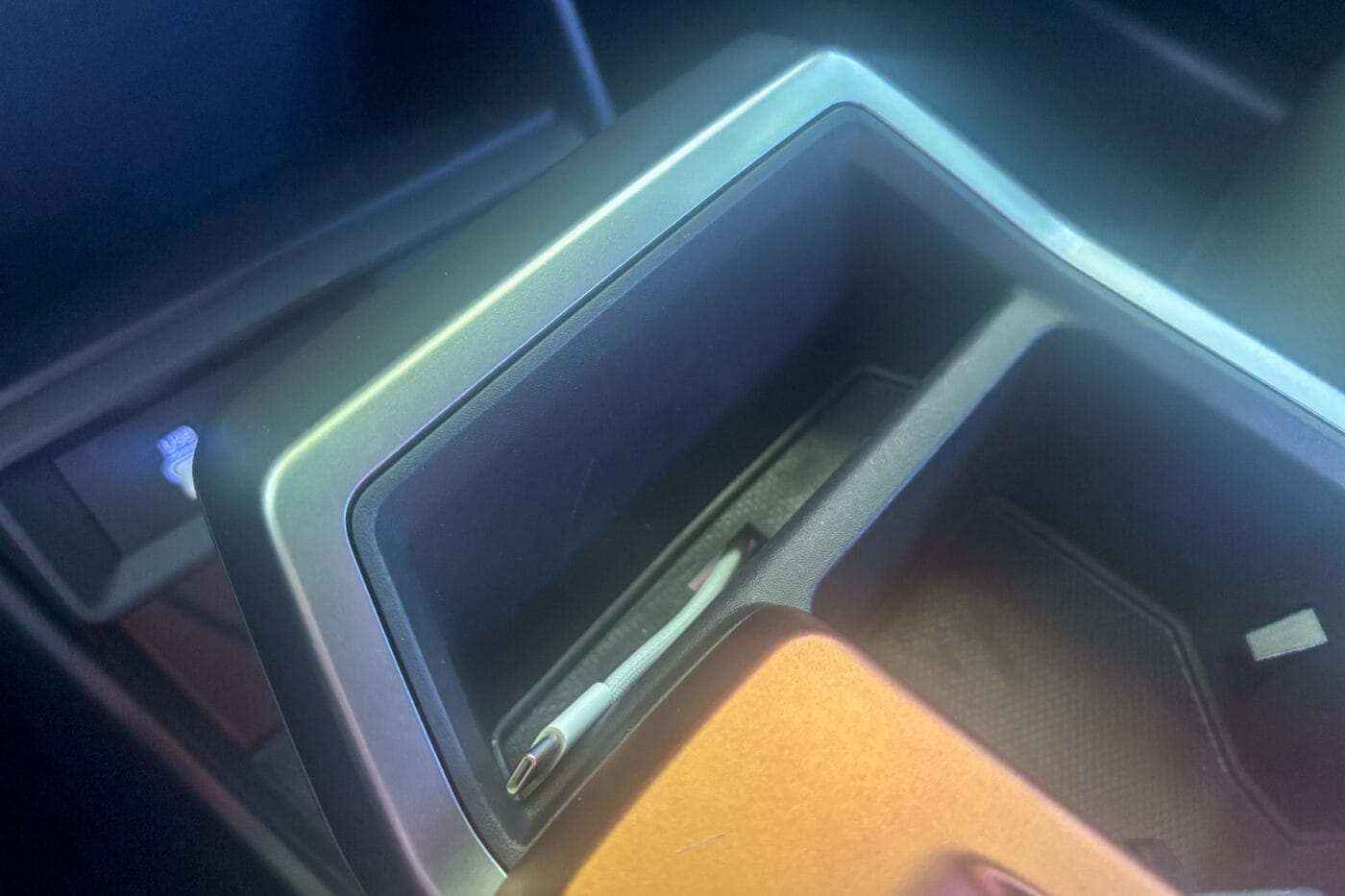
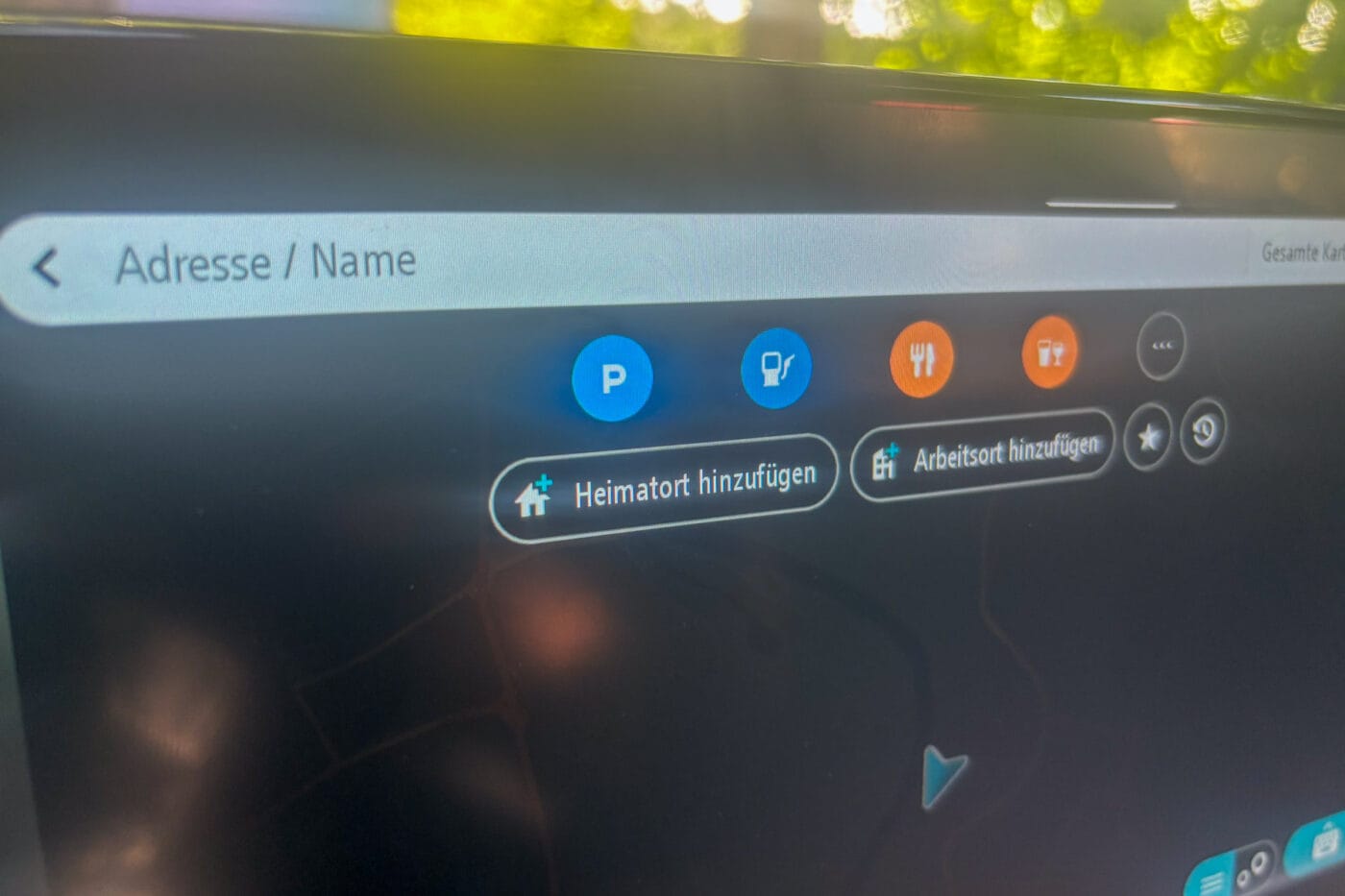
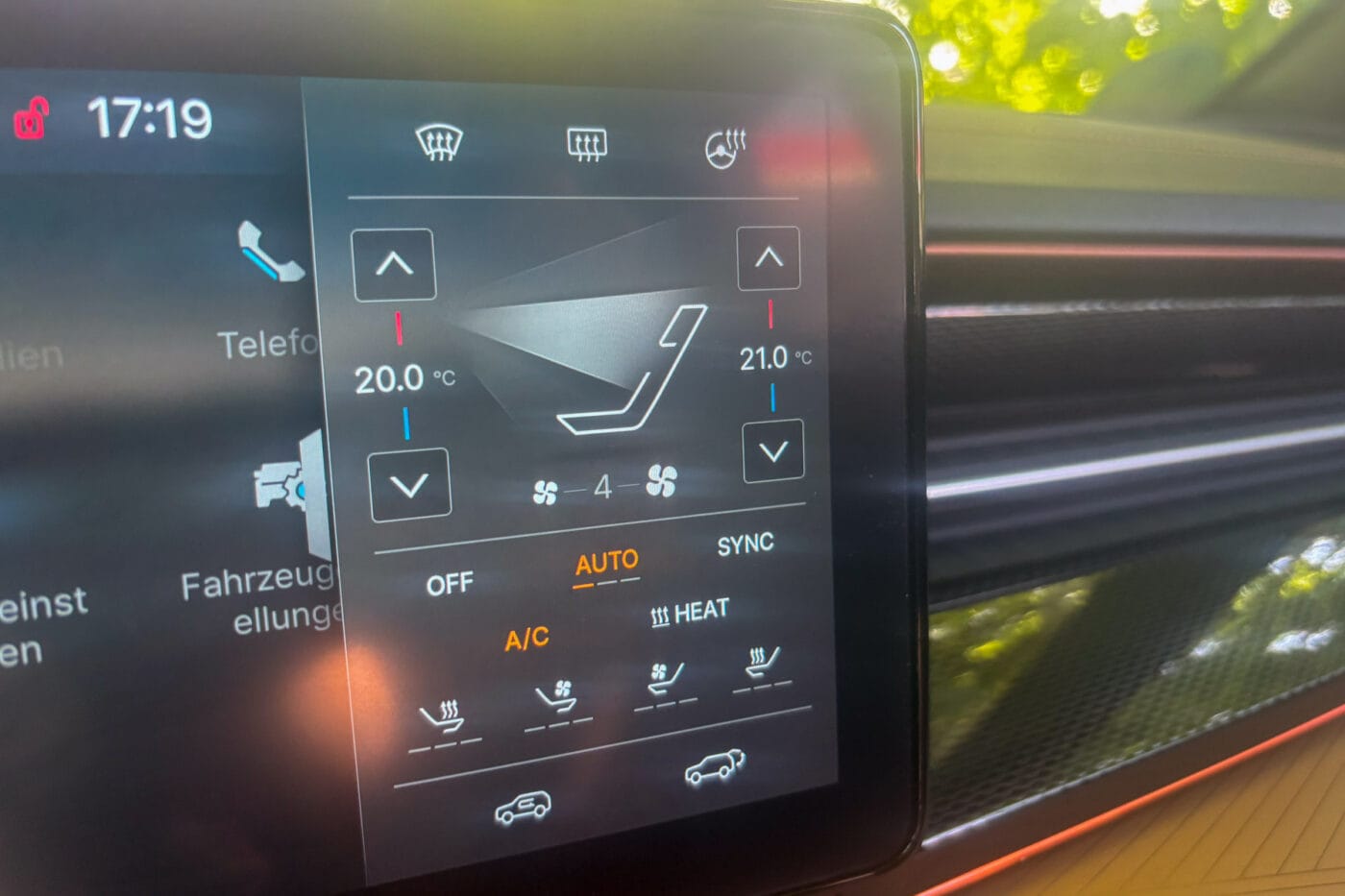
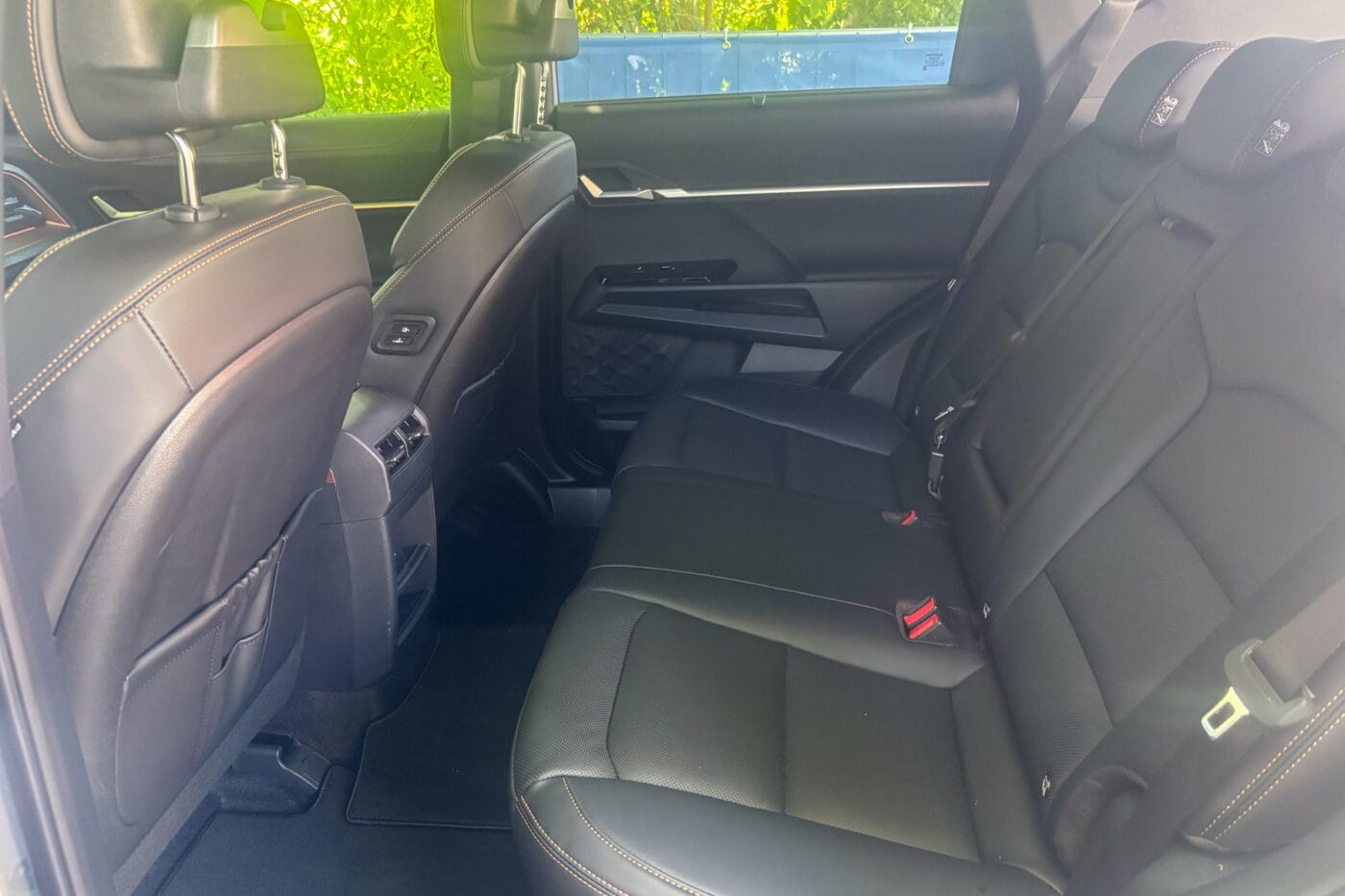
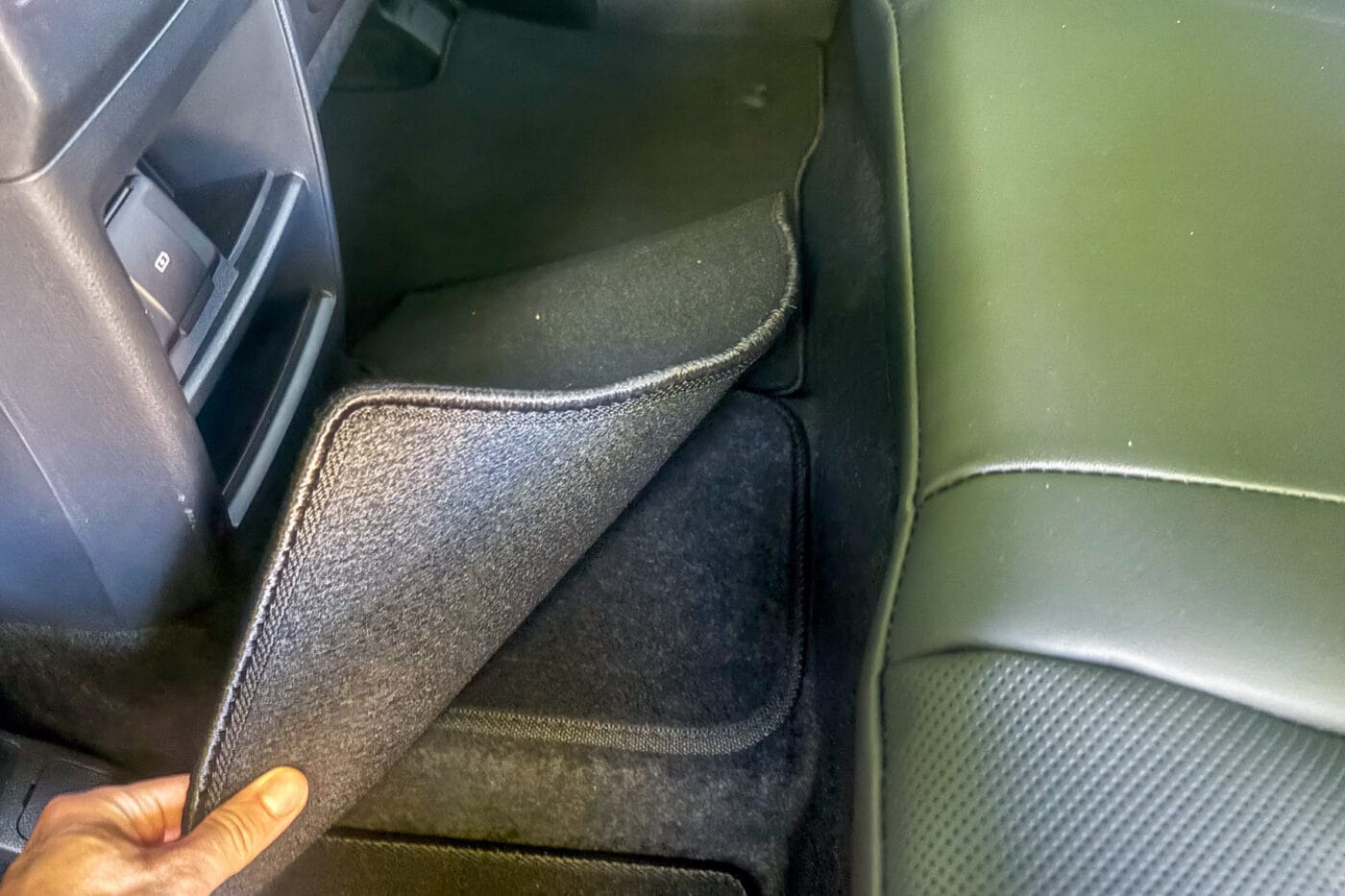
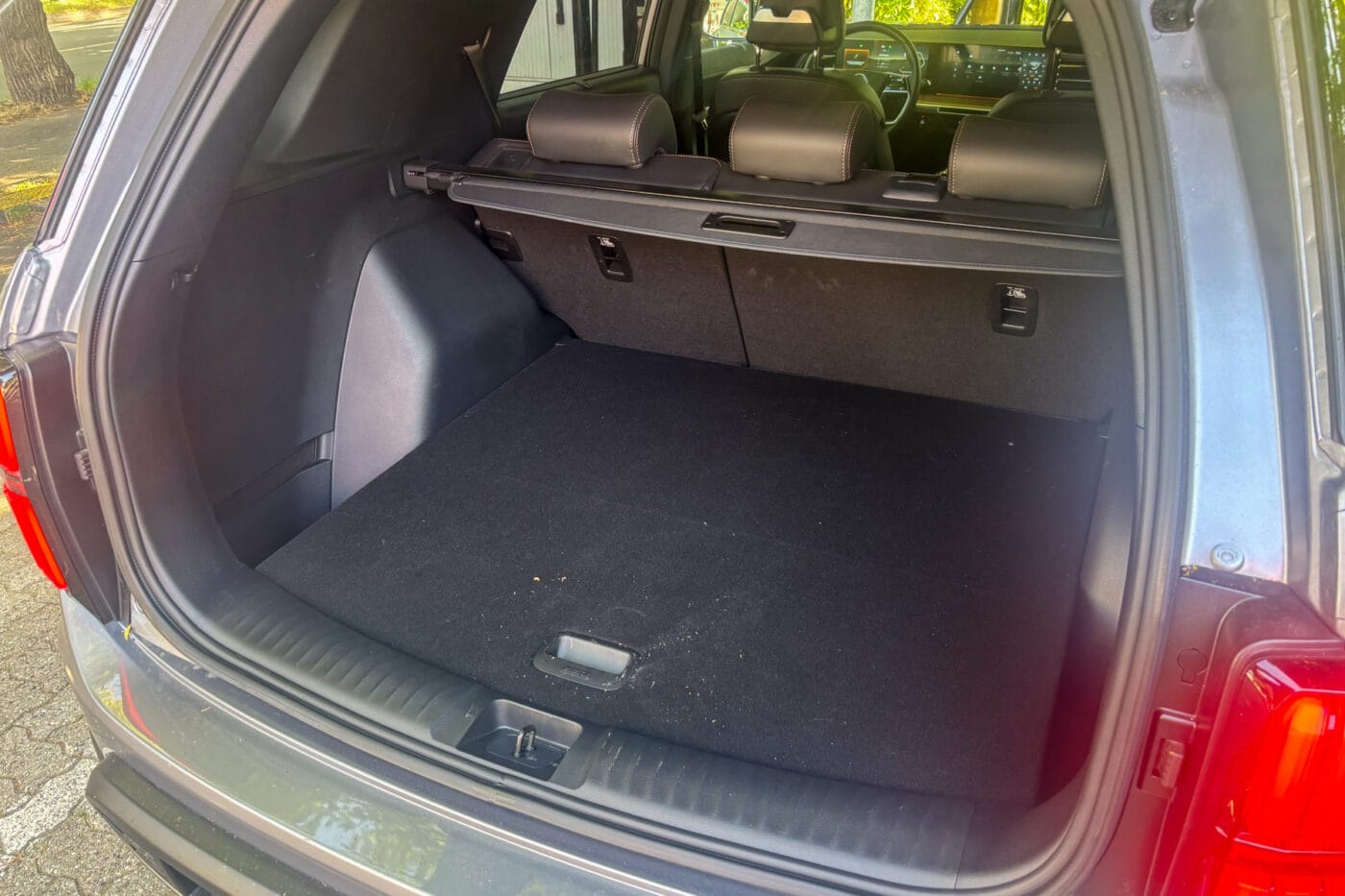
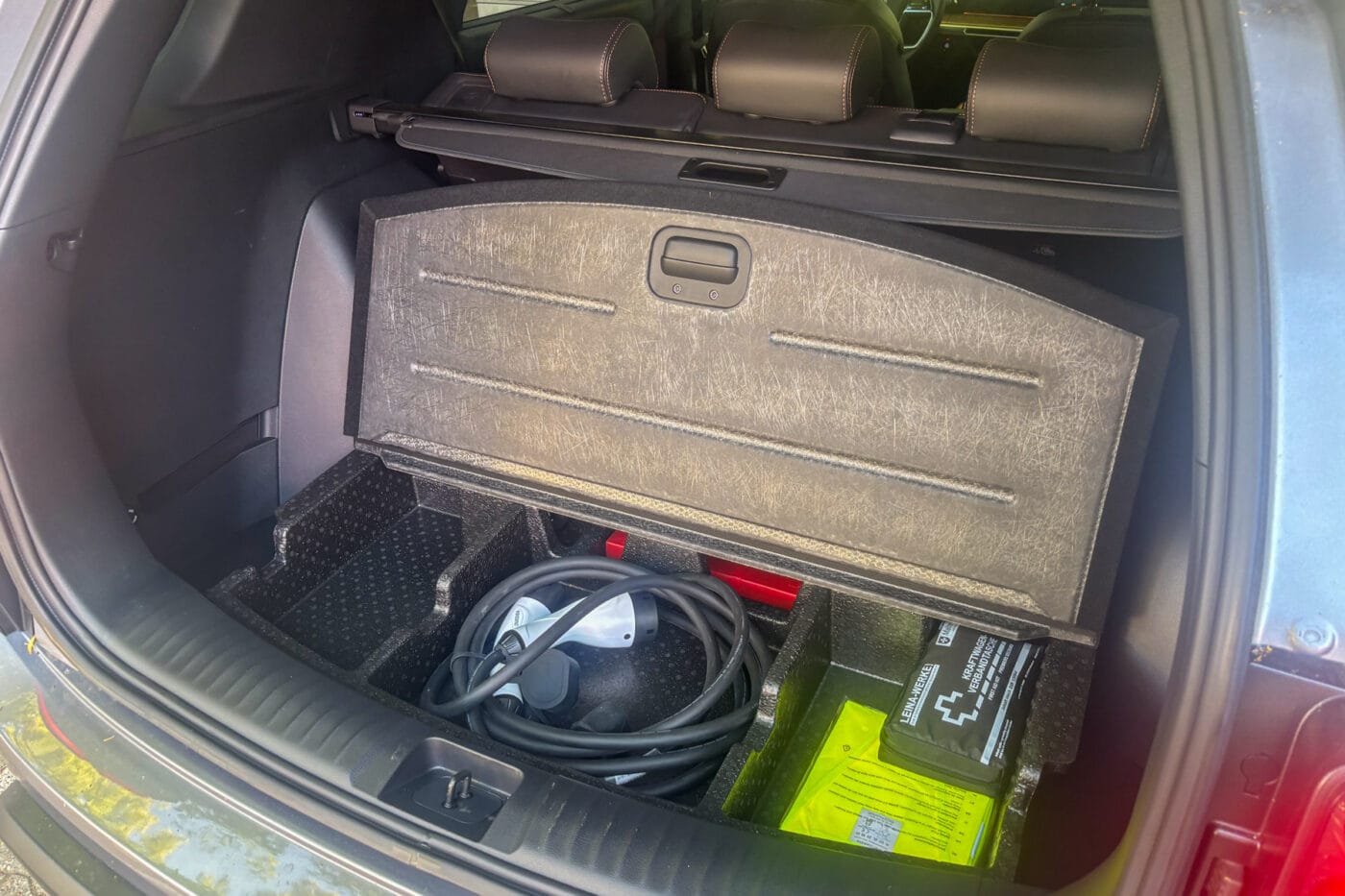
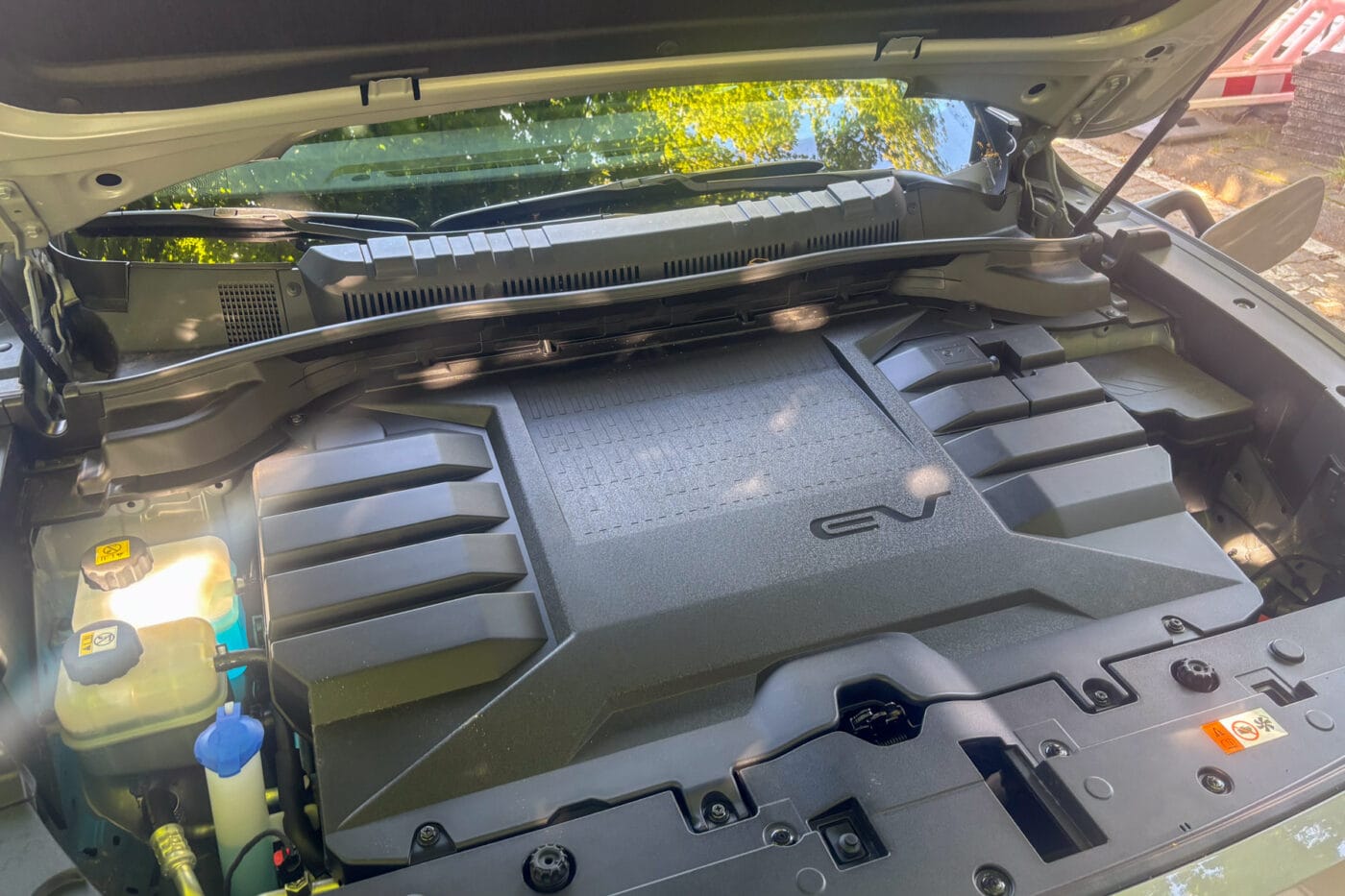
The Torres EVX does not have a frunk, so the charging cable has to be stowed in the storage compartment under the boot – not ideal if the boot is full but you need to access the charging cable. However, the compartment is large enough to store the optional V2L adapter (up to 3.5 kW power). In my opinion, however, the charging port between the driver’s door and the front wheel is not ideally positioned: Depending on the position of the charging point, it can be tight with heavy and bulky CCS cables, or you have to manoeuvre very close to the charging point. However, the standard front camera helps here.
In addition to a roof rail, the Torres EVX also offers a trailer coupling with a towing capacity of up to 1,500 kilograms; however, the brochure sometimes mentions 500 and sometimes 750 kilograms for the towing capacity of unbraked trailers.
The Torres EVX is only available with the combination of drive and battery that we tested, but in three equipment levels. It starts at 41,990 euros for the base model Core, which offers fabric seats without seat heating, and the heat pump costs 1,300 euros extra. The mid-range Bliss model is priced at 44,990 euros and offers many, but not all of the features of the top-of-the-range version, except that the heat pump is not even available for an extra charge. The top-of-the-range Lux model is priced at 48,990 euros, including the heat pump. The metallic paint costs 700 euros extra for all equipment levels.
Final impressions
The KGM Torres EVX is not easy to assess. It does many things well, but none of them are really outstanding. Some design decisions can also be seen as full of character. In my opinion, however, the chassis set-up, ergonomics and, above all, the lack of battery preconditioning are clear deductions. That simply has to be the case, especially with an LFP battery. The deal with BYD will probably determine what KGM buys. If it is the complete battery pack, the company’s hands are probably tied. If only the cells are purchased, such a system would have had to be built into the company’s own design.
No outstanding strengths, a few weaknesses. But if, for example, you are not dependent on fast charging (in winter) because you stay within the range of your own wallbox, even the lack of preconditioning would be bearable. What is likely to make life rather difficult for the Torres EVX is the combination of price and competition: customers in Europe have a lot of choice between 40,000 and 50,000 euros, and often with a more coherent overall package.


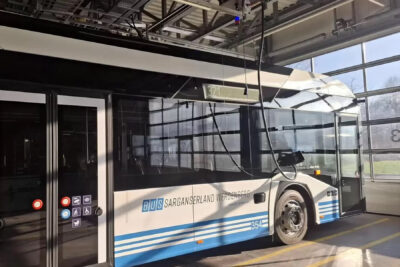

0 Comments